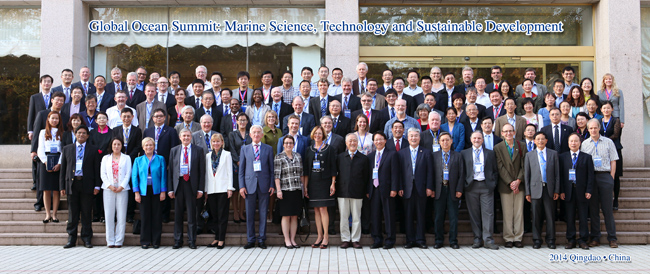Institutional coordination of global ocean observations in Global Ocean Summit

A sustainable global ocean observation system requires timely implementation of the framework for ocean observing. The Qingdao Global Ocean Summit held on 25-26, October, 2014 highlighted the need for a more coherent institutional response to maintain an integrated ocean-observing system. A commentary on this event written by some CLIVAR participants was published in recent issue of the Nature Climate Change (Cai et al., 2015).
At the summit, leaders from 61 universities and research institutions, from both developing (22 institutions) and developed (39 institutions) nations, discussed the necessity of developing the institutional coordination of global ocean observations. A globally coordinated effort will reap enormous benefits — improved international coordination will help to deliver both a great return on investment and strong science outcomes, and facilitate the emergence of technologies and capabilities for observing deep and unknown parts of the ocean.
The international Argo program provides an example of the success of such coordination. This program, for the first time, allows continuous monitoring of ocean temperature and salinity on a global scale, with all data relayed and made publicly available within hours after collection. The 10 years of data with over 1,000,000 profiles have been used widely, including studies that examine the distribution and changes in heat and water cycles.
New research areas in ocean science that are important in addressing societal issues, a step change in long-term capacity building and capability development in developing countries and emerging economies, and new globally coordinated research efforts on sustainable use of ocean resources in a changing ocean were also highlighted in the summit.
Reference:
Wenju Cai, Susan K. Avery, Margaret Leinen, Kenneth Lee, Xiaopei Lin, Martin Visbeck. Institutional coordination of global ocean observations. Nature Climate Change. 5, 4–6 (2015)
Link to the article: http://www.nature.com/nclimate/journal/v5/n1/full/nclimate2482.html













